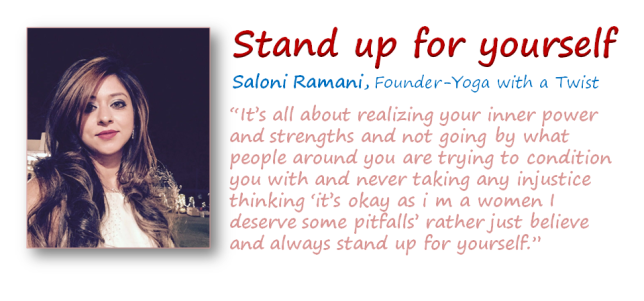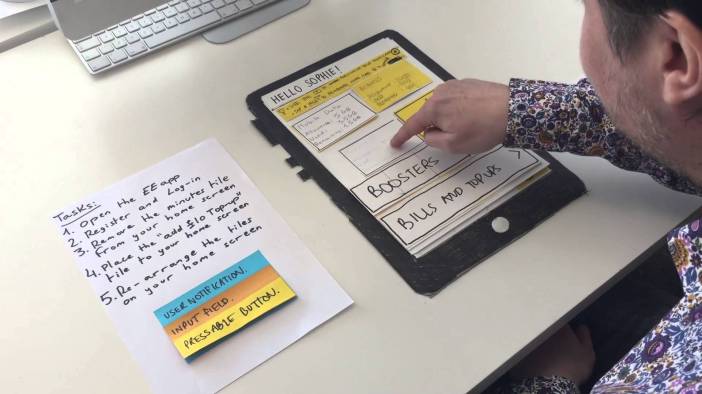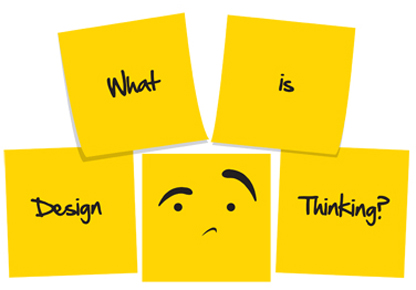Have you ever thought how did some women manage to progress in their careers while also enjoying life outside of work? They are also leading their part in the same male dominated society as the rest of us. What’s their secret to effectively climb the ladder of success? We asked 8 successful women leaders how did they deal with challenges to accomplish what they have. What’s their advice to women who wish to do something which matters out of their lives? Here’s what they had to say:
1. Be ready to play too many parts – Deepshikha Kumar, Founder and CEO, SpeakIn Many of us have to juggle through various roles and responsibilities in our life. Yet, we must pursue our passion with confidence.
Many of us have to juggle through various roles and responsibilities in our life. Yet, we must pursue our passion with confidence.
So don’t give up because it’s tough, try harder and bounce back with more force each time you fail.
2. Set goals & Prioritize – Simrat Kaur, Founder, Hashtag Handmade Prioritizing and multi tasking is the key to success for women. Many women give up a well paying corporate job and start to work from home to raise kids. The biggest challenge for women in today’s nuclear family set up.
Prioritizing and multi tasking is the key to success for women. Many women give up a well paying corporate job and start to work from home to raise kids. The biggest challenge for women in today’s nuclear family set up.
“It gives me flexibility to choose projects and work as per my schedule. After leaving my corporate job, I am working on my passion; probably setting an example for my daughter to follow her heart and pursue her dreams and for my son to respect women with dual roles (home and outside).”
3. Be persistent – Sonya Vohra, AVP Globosport , Founder of Posh19.com (Online Fashion Magazine) Talking about success for women in any corporate or business, it’s an everyday struggle but have to manage to survive it by being persistent and consistent.
Talking about success for women in any corporate or business, it’s an everyday struggle but have to manage to survive it by being persistent and consistent.
“It also becomes tough because – even if we do want to give 100% to work sometimes you can’t just because you have so much to handle professionally and personally and since we are not super humans we do end up missing the mark at times and that momentary weakness can still beat you up.”
4. Stand up for yourself – Saloni Ramani, Founder , Yoga with a Twist Do you give up because people are more judgmental about you than your male colleague? Don’t lose confidence because of trying to prove yourself again and again; move ahead with your dreams passionately.
Do you give up because people are more judgmental about you than your male colleague? Don’t lose confidence because of trying to prove yourself again and again; move ahead with your dreams passionately.
“Unconditional love and acceptance for oneself will not only raise your self esteem but will give you freedom to be real you and will earn you respect from your peers so just love yourself immensely”
Believe in yourself and don’t let people tell “stop you” because you are a woman.
5. Believe that you have it in you – Minakshi Naithani, AVP, HDFC Bank Those of you who are not aware of your own capabilities, this will help.
Those of you who are not aware of your own capabilities, this will help.
“It used to be tough but I think now society has accepted the fact that women are at par with their male counterparts if not better.”
I am sure this will make you trust in a brighter future for women, the world is changing for the better.
6. Never underestimate yourself – Shweta Sharma, Vice President – Finance, Blue Hive India, A WPP Group Company Not just finance, women are held to higher standards and judged more harshly than men. Shweta’s a perfect example to not to deprive yourself or underestimate for any challenge.
Not just finance, women are held to higher standards and judged more harshly than men. Shweta’s a perfect example to not to deprive yourself or underestimate for any challenge.
How often do you see men in the maternity ward and day care centers or women in trucking, construction and heavy machinery operations?
The social scientists call this “occupational segregation”. Many are facing these stereotyping in the workplace.
“I believe that no matter what you chose as your field of work, you need to believe in yourself, in your abilities and never take a shortcut for doing your job as only when you learn and master the basics will you be able to move up and handle bigger roles and responsibilities.”
7. Make balance – Richa Vaish Joshi, Deputy Director, Training & Development and Head Hunting, Amity University – Lucknow
Meet the parents of playgroup kids in Gurgaon and you would know that majority of the mothers have either taken a sabbatical or left work to raise their kids. Life is all about making compromises and making the best out of what we have. But that should not stop us from trying.
Life is all about making compromises and making the best out of what we have. But that should not stop us from trying.
So I would say you would also see mothers who have molded their lifestyles to meet their kids’ needs as well as their own needs.
8.Find your anchor – Elizabeth Onyeabor, Author, Speaker & Coach I strongly believe that successful women are usually inspired by other successful women. And if people don’t have great role models–especially role models in whom they can see themselves–they’re at a big disadvantage.
I strongly believe that successful women are usually inspired by other successful women. And if people don’t have great role models–especially role models in whom they can see themselves–they’re at a big disadvantage.
“Connect with a sage—someone at least one step ahead on your career path. Then, be the sage to other future women leaders who are at least one step behind you. Above all, nurture a loving relationship with yourself. Mentor your inner sage and embrace the cornucopia you deserve.”
Elizabeth shares, “She saw in me what I did not see in myself and continued to nurture and help me grow my talents until I was able to do the same for others.”
Not many women know that you are fortunate if in your early career you find a strong, caring woman leader mentor.
Like these women, if you’ve achieved success by beating leadership challenges women face today, you can also dispel doubts and instill confidence in other aspiring women leaders.
Share your advice and inspire others.
 Giving a leadership role or having a quota for women in senior leadership won’t solve the problem of gender inequality. The management must understand the roots of the issue – why women don’t make it to the top.
Giving a leadership role or having a quota for women in senior leadership won’t solve the problem of gender inequality. The management must understand the roots of the issue – why women don’t make it to the top.
 2. Exercise: Organizations should provide challenging assignments that helps future woman leaders build confidence to step out of their comfort zone. Leadership Development programs should be designed to help them to shift from aspiring to be leaders to developing the confidence to lead. It’s like unleashing their potential.
2. Exercise: Organizations should provide challenging assignments that helps future woman leaders build confidence to step out of their comfort zone. Leadership Development programs should be designed to help them to shift from aspiring to be leaders to developing the confidence to lead. It’s like unleashing their potential. 3. Engage: Receiving encouragement through programs that provide constructive feedback for further scope of development along with appreciation for a job well done and not just raises and promotions. Like Sakshi, many women face challenges collaborating and networking. A leadership development program that engages them on how to be bold and assertive.
3. Engage: Receiving encouragement through programs that provide constructive feedback for further scope of development along with appreciation for a job well done and not just raises and promotions. Like Sakshi, many women face challenges collaborating and networking. A leadership development program that engages them on how to be bold and assertive. 4. Transitioning: Leadership development programs must support smooth transitioning to big roles. Providing challenging and aspiring opportunities to collaborate and create networks can only show results when women are made aware of their own strengths and not what others perceived them to be.
4. Transitioning: Leadership development programs must support smooth transitioning to big roles. Providing challenging and aspiring opportunities to collaborate and create networks can only show results when women are made aware of their own strengths and not what others perceived them to be.

 3. Brand Yourself – Making your presence felt: The next generation leadership is about how you use your influence to motivate, collaborate and manage others. Whether it’s Steve Jobs or Mark Zuckerberg, both have the ‘posture of composure’. They may be dressed in casuals (jeans n t-shirts) but they are a BRAND in themselves.
3. Brand Yourself – Making your presence felt: The next generation leadership is about how you use your influence to motivate, collaborate and manage others. Whether it’s Steve Jobs or Mark Zuckerberg, both have the ‘posture of composure’. They may be dressed in casuals (jeans n t-shirts) but they are a BRAND in themselves.



 What is the actual problem?
What is the actual problem? 




























 You are talking even when you are not
You are talking even when you are not Go slow – With words and information
Go slow – With words and information Cut down ‘umm’ and ‘like’
Cut down ‘umm’ and ‘like’  WE instead of ME
WE instead of ME A story can activate the brain
A story can activate the brain Listen with your eyes as well as your ears
Listen with your eyes as well as your ears Show enthusiasm
Show enthusiasm




